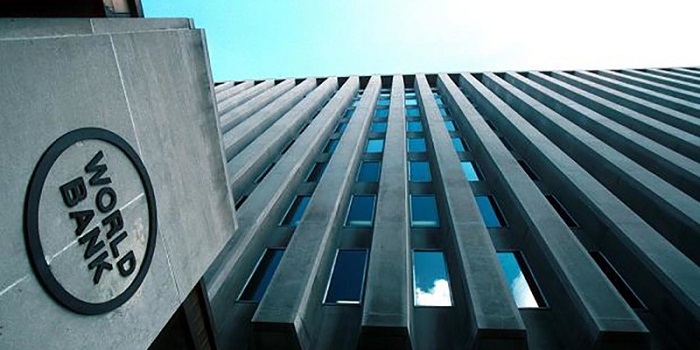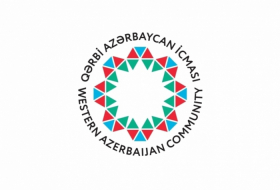Following its underwhelming response to the COVID-19 pandemic and the damaging “Doing Business” scandal, the World Bank should focus on getting money to poor countries. Here, the Bank can distinguish itself by providing governments with both concessional loans and untied aid.
Since its founding, the World Bank has evolved to perform three main functions: provide global public goods, generate valuable data and independent analysis, and transfer mostly concessional resources to poorer countries. Having recently undermined its credibility with regard to the first two objectives, the Bank should now focus on the third.
Start with global public goods. The COVID-19 pandemic presented the World Bank with an ideal opportunity to burnish its credentials. But the Bank’s performance – standing on the sidelines as the COVID-19 Vaccine Global Access (COVAX) facility unraveled and failing to release money it had pledged for vaccine procurement – fell short on both health and economic grounds. For now, at least, we must therefore temper our expectations of the Bank’s willingness to provide global public goods, particularly in the face of more difficult challenges such as climate change.
Now consider data and analysis. Over the years, the data collected and compiled by the Bank – including the World Development Indicators, estimates of global poverty and purchasing power parity, and various surveys – have been some of its major contributions. But revelations that the Bank’s senior management had manipulated data in multiple editions of the flagship Doing Business report (in order to improve the rankings of China and Saudi Arabia in particular) risk undermining confidence among policymakers and researchers.
In the wake of these stumbles, the Bank’s redemption – or at least its relevance – will increasingly depend on its financing function. But that requires recognizing how much the world has changed. For starters, the share of the world’s population living in low-income countries has plummeted from nearly 60% in 1990 to around 10% today. Rapid economic growth in developing countries over the past three decades – especially in China and India – has gradually reduced the number of low-income countries from 48 in 1990 to 34 in 2019. And the total population living in poor countries has fallen from three billion to just over 760 million.
These dramatic changes mean that the resource-transfer responsibilities of the rich world in general, and the World Bank in particular, are now confined to a small share of humanity in a narrow set of countries. For countries like China, India, Indonesia, or Vietnam, which have graduated to middle-income status since the 1990s, the Bank’s relevance has shrunk. This is largely because, according to our estimates, private credit grew sixfold over this period, doubling its share of these economies’ total external finance to roughly two-thirds.
But the share of the world’s poor living in low-income countries, which fell from about 93% in 1990 to a low of just over 30% in 2010, has since rebounded rapidly, to over 40% in 2017, as the poorest countries lag behind fast-growing emerging markets. Low-income countries’ financing needs thus remain central to helping poor people.
For countries such as Ethiopia, Mozambique, Afghanistan, and Nepal, foreign aid in the form of grants still accounts for about half of gross external financing, and World Bank loans comprise another 15% or so. The overall level of foreign aid to low-income countries has risen from about $8 billion a year in 1990 to roughly $30 billion, driven largely by a surge in funding for public health. Meanwhile, the Bank’s share of these countries’ external financing has remained fairly constant.
Non-concessional financial flows to these countries remain small. Tapping private markets is still less common: total private finance, including sovereign bonds and commercial loans, accounts for only about 10% of their governments’ external inflows. These governments have increasingly obtained resources from China – just under $4 billion a year in the 2010s, according to research by AidData – but most Chinese overseas projects benefit slightly wealthier countries.
The World Bank should base its financing on two principles: low-income countries need a lot of concessional resources, and their governments should exercise more agency (“country ownership” in aid argot) in their policy choices. Private finance is costly and still beyond their reach; Chinese lending appears both expensive and heavily tied to infrastructure; and concessional aid seems to be tied to health. The Bank can therefore distinguish itself by providing both concessional financing and untied aid that strengthens local policymakers’ agency.
Accordingly, the Bank should align its priorities with the growing trend in poor countries to adopt cash transfers and a universal basic income. In a caricatured version of this idea, a simple algorithm based on “need” could determine the resource transfers required for each country over a time horizon of, say, 5-10 years. This approach would not only transfer agency back to borrowing governments, but also should be a step toward simplifying the large and complicated international aid architecture and restraining the excesses of its self-perpetuating bureaucracy.
The ongoing talks about replenishing the International Development Association, the Bank’s concessional lending arm, offer an opportunity to codify this idea. The Bank’s recent failures are no excuse for the United States, the European Union, and other donors to be stingy toward the IDA. Rather, they are a reason to be clear-eyed about what the Bank can do, and to ensure that it is fully funded and focused on its most important remaining function: getting money to poor countries.
The fact that institutions such as the World Bank are losing their relevance is more cause for celebration than lamentation, because it is a sign that poorer countries have less need for outside help. But losing relevance need not imply looming extinction. The Bank may be only a limited provider of global public goods, and a reluctant speaker of truth to power, but it still has a vital, if narrowing, financing role to fill.
Doing that will require the Bank to become less of a sprawling bureaucracy and more of a mean-and-lean global cash-transfer algorithm. The governments of 2-3 dozen poor countries, and several hundred million people, stand to benefit.
Arvind Subramanian, a senior fellow at Brown University, is a distinguished non-resident fellow at the Center for Global Development and the author of Of Counsel: The Challenges of the Modi-Jaitley Economy.
Justin Sandefur is a senior fellow at the Center for Global Development.
Read the original article on project-syndicate.org.
More about:
















































